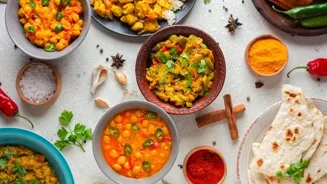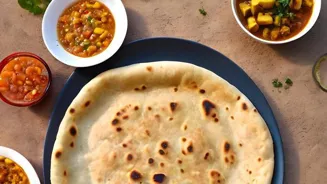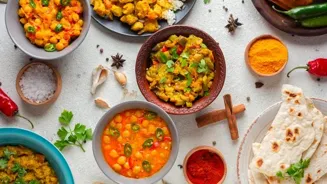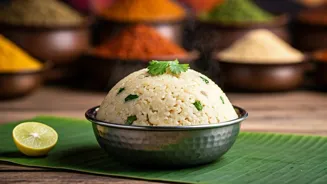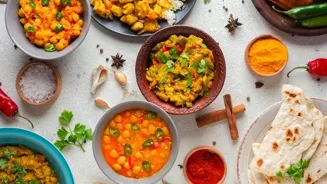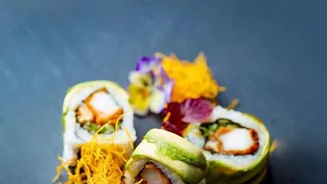Idli vies with information technology as one of the enduring Indian success stories of globalisation. Its unparalleled conquest occurred silently and went unnoticed even as it was unfolding. Today, there
is no continent where you don’t find Idli.
Globalisation didn’t just usher in the Microsofts and the Googles to India. It also brought American corporatised, stock-market-traded food-producing factories like KFC, Pizza Hut, McDonalds and Taco Bell. Each spent millions to first study the Indian market before entering it. All of them ultimately ate the humble pie here. Nothing proclaims their admission of defeat more loudly than their India-centric menus. Nowhere else in the world would you see an Ultimate Tandoori Veggie, a Nawabi Murg Makhni, a Dhabe da Kheema, an Indian Tandoori Zinger Burger, an Indian Paneer Zinger Burger, Mazedar Makhni Paneer Pizza, or a Tikka Masala Burrito (veg and non-veg).
All that market-research money, all those ginormous consulting fees given to five-star MBAs from fancy business schools… all that cash burnt to ashes by the Indian “market” which decisively rejected the original menus served in America.
It is a crime of cosmic proportions when we observe that the discerning power of the Indian palate has not been given its due honour. Nothing screams “conviction” louder than the finely-honed Indian taste bud, which singlehandedly brought these gigantic American food chains to their knees in an astonishingly swift time, forcing them to reinvent and Indianise themselves.
But thanks to prolonged colonisation, the average Indian initially attached prestige and glamour value to these American food chains. Yet, his taste buds did not allow him to lie. Overall, stepping inside an American fast food chain is akin to stepping inside the shop floor of a factory. What you get there is a product, not food.
In a parallel development, the Idli was quietly steamrolling its humble brigade. Just as the McDonalds of the world were attempting to culinarily invade India led by an advance party of Excel sheets and PowerPoint presentations, the Idli had already made an impressive presence in the Western hemisphere. It required no “strategising” to customise it to Western tastebuds. It needed no corporate think tanks and strategists and expensive ad agencies. And its silent conquest has remained unchanged from the day it was born.
To my mind, the best tribute that we can pay the Idli is twofold.
The first is its physical appearance, which resembles the fully-rounded and stainless smile of a cherub.
The second is its intrinsic and unpretentious purity. The Idli is tasteless but irresistible; it is bland but harmless; it causes no stomach upset and is easily digestible; it can be eaten with almost any accompaniment — chutney, curry, broth, pickle, saagu…anything.
In short, you are powerless to resist the alluring suzerainty of the Idli. It is the topmost dish on the menu of any restaurant throughout South India. This holds true for any restaurant throughout India that serves south Indian food.
Yet, for all its virtuous prowess, the Idli’s conquest of the world is a relatively recent story. Even a century ago, Idli was a dish largely confined to the Tamil speaking regions. This is rather intriguing given the fact that the Idli’s origins are Vedic.
Sri Sediyapu Krishna Bhatta was one of the most distinguished and original scholars in language, linguistics, aesthetics and prosody. After ransacking about three millennia worth of primary sources in most Indian languages, he has narrated the full history of Idli in a delightful Kannada essay titled, iḍliya itihāsa (The History of Idli). It bears his characteristic distinction — depth and breadth of multidisciplinary scholarship, and meticulous reasoning.
He begins with an intense technical investigation into the word Idli, that takes up three-plus pages. It is a highly pleasurable scholastic journey interspersed with vivid scenes of socio-cultural history, etymology, morphology and phonology. The following is its condensed version.
In the Sanskrit-English Dictionary of V.S. Apte, he finds the following words:
1. इण्ड्रः iṇḍrah
2. इण्ड्रम् iṇḍram
3. इण्ड्रवम् iṇḍravam (used in the dual): This means, “two small, round plates used as coverings for the hands in taking the fire-pans from the fire.” It occurs in the phrase, “अथैनमिण्ड्राभ्यां परिगृह्णाति” (athainamiṇḍrābhyāṃ parigṛhṇāti) occurring in the Satapatha Brahmana.
To state the obvious, the earliest mention of the word iṇḍram occurs in the Satapatha Brahmaṇa, which dates back to at least seven thousand years. The context in which it occurs has unambiguous connotations related to Yajna.
On the physical plane, iṇḍra ( इण्ड्र) was a utensil, the aforementioned two small round plates. This utensil is exactly what is used even today to make Idlis. Over the millennia, the number of these plates have increased more than a hundredfold — as seen typically in fast food South Indian restaurants. However, the physical form and shape of the utensil has remained intact.
After this, Sri Sediyapu traces the phonetic changes that the word iṇḍra underwent in the realms of space and space. It variously morphed into inḍrī, inḍari, iḍḍalige, iḍḍali, and finally, iḍli in Kannada.
The earliest mention of the word iḍḍalige occurs in the Haḻagannaḍa (Old Kannada) work titled Vaḍḍārādhane, dating back to the 9th century CE.
Then we have the Ayurvedic treatise titled, cakradattā saṃhita (10th – 11th century), which contains this verse:
godhāpadīmūlayuktām khādet māṣemḍarīm naraḥ |
jayet ślīpada rogottham jvaram ghoraṃ na saṃśayaḥ ||
When the root of the godhāpadī plant is mixed with blackgram and ground into a fine powder and the inḍari dish prepared from this mixture is eaten, it cures the terrible fever caused by elephantiasis.
The verse makes it clear that Idli was prepared in this manner using blackgram. It is interesting to note that Chakrapanidatta, author of the Cakradattā saṃhita lived in the Gauda-Desha or Bengal.
(To be continued)
The author is the founder and chief editor, The Dharma Dispatch. Views expressed in the above piece are personal and solely that of the author. They do not necessarily reflect News18’s views.



